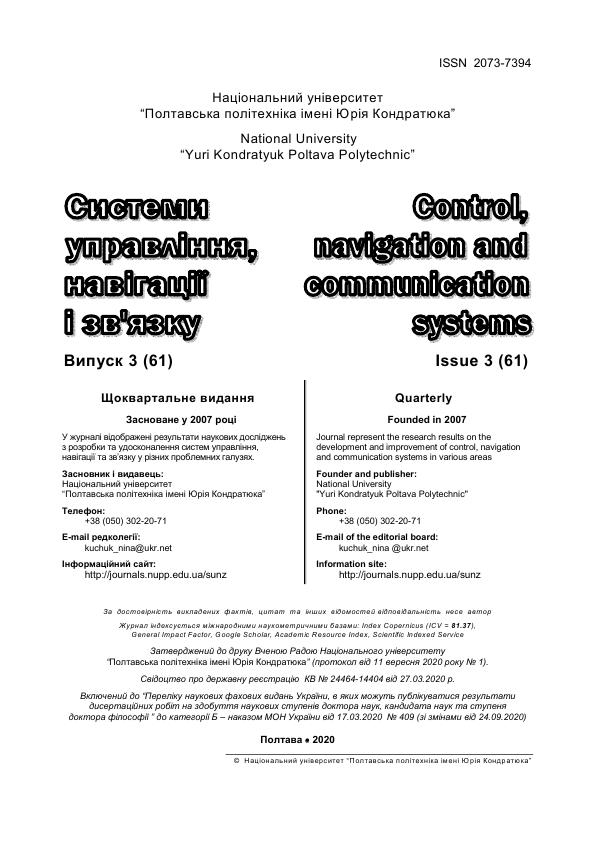НЕЙРОМЕРЕЖЕВА ПІДТРИМКА ІНТРОСКОПІЇ ВНУТРІШНЬОЇ СТРУКТУРИ ТА ПАРАМЕТРІВ БУДІВЕЛЬНИХ КОНСТРУКЦІЙ
DOI:
https://doi.org/10.26906/SUNZ.2020.3.069Ключові слова:
аналітичний комплекс, інтроскопія, нейронна мережа, метод зворотного поширення помилки, класифікатор реального часуАнотація
Інтроскопія – процес безконтактного, неруйнівного аналізу внутрішньої структури об’єкта або процесів у ньому за допомогою рентгенівського випромінювання, оптичних, акустичних, ультразвукових, сейсмічних, електромагнітних хвиль різного діапазону, принципів модуляції і кодування. В її реалізації задіяні методи отримання тіньових, томографічних, радіолокаційних та ін. зображень об’єкта дослідження, в яких міститься інформація про даний об’єкт. Аналіз зображення і прийняття рішення про структуру об’єкта або його стан здійснює експерт (оператор). Ефективність аналізу залежить від кваліфікації експерта і може істотно знижуватися за рахунок зростання числа помилок і часу аналізу. У реальних умовах класифікація стану об’єкта дослідження при значній кількості ознак, з їх нестабільним або малоінформативним ступенем отримання знань представляється нетривіальним завданням. На сьогоднішній день розроблені і впроваджені в практику технології розпізнавання зображень на основі штучного інтелекту, що дозволяють синтезувати нейромережеві класифікатори в системах технічного зору, інваріантних до фізичних особливостей ознакових просторів досліджуваних образів об'єктів. Для технології інтроскопії підготовлена нейромережева інформаційно-аналітична, програмна та інструментальна основа для вирішення завдання автоматизації візуалізації зображень і їх ідентифікації в просторі тіньових, томографічних, багаторакурсних інформативних ознак із застосуванням статистичних вирішальних правил. Розроблена технологія представлена у вигляді ансамблю нейромережевих моделей класифікаторів, реалізованих самостійними програмними додатками в основному коді існуючого пакету технічного аналізу, наприклад, нейроемулятора середовища StatSoft. Синтез моделей класифікаторів за вхідними даними образів на основі тіньових і томографічних растрових розгорток в стандартному пакеті нейроемулятора дозволяє вирішувати задачу при мінімальних витратах і необхідних показниках якості. Проведені дослідження ознакових просторів процесу інтроскопії, можливостей коректного застосування статистичних вирішальних правил, алгоритмів примусового навчання синтезованих нейромережних моделей в базисі існуючих пакетів технічного даних дозволяють підвищити продуктивність технічних засобів інтроскопії шляхом автоматизації процесу аналізу, зниження впливу суб'єктивних рішень, скорочення часу реакціїЗавантаження
Посилання
Soroko L.M. Introskopiya. M.: Energoatomizdat, 1983. – 126 p.
Afonin P.N., Sigayev A.N. Teoriya I praktika primeneniya tekhnicheskikh sredstv tamozhennogo kontrolya: uchebnoye posobiye. SPb: Troitskiymost, 2013. – 256 p.
Oshchepkov P.K., Pirozhnikov L.B. Okruzhayushchiy mir prozrachen. M.: Znaniye, 1980. – 64 p.
PrettU. Tsifrovaya obrabotka izobrazheniy.M.: Mir, Vol.1,2. 1982.
Agadzhanyan G.M., Krasnitskiy A.P., Korneyev V.N. Informatika I tekhnologiya. Sistema tekhnicheskogo zreniya. – IBPRAN, 1996. – 215 p.
Haykin S. Neural Networks: A Comprehensive Foundation, 2nd Edition. McMaster University, Ontario Canada, 1998, 842 p.
Aloshin S.P . Neyrosetevoybazispodderzhkiresheniyvprostranstvefaktorovisostoyaniyvysokoyrazmernosti. – Poltava: Izd.«Skaytek», 2013. – 208 p.
Borovikov V.P. STATISTICA NN – Tekhnicheskoyeopisaniye. M.: Mir, 1999. – 239 p.




